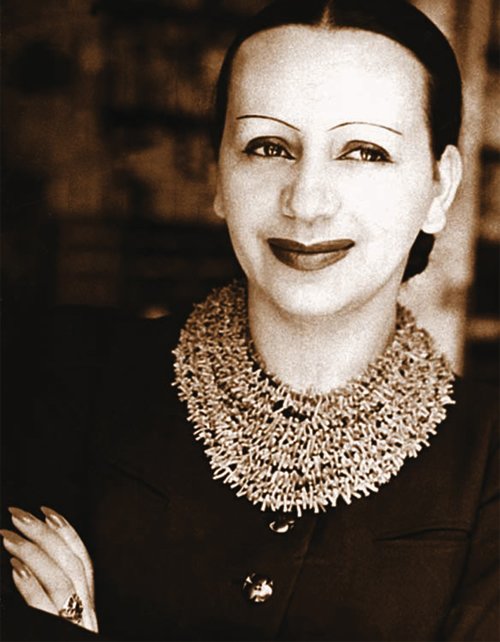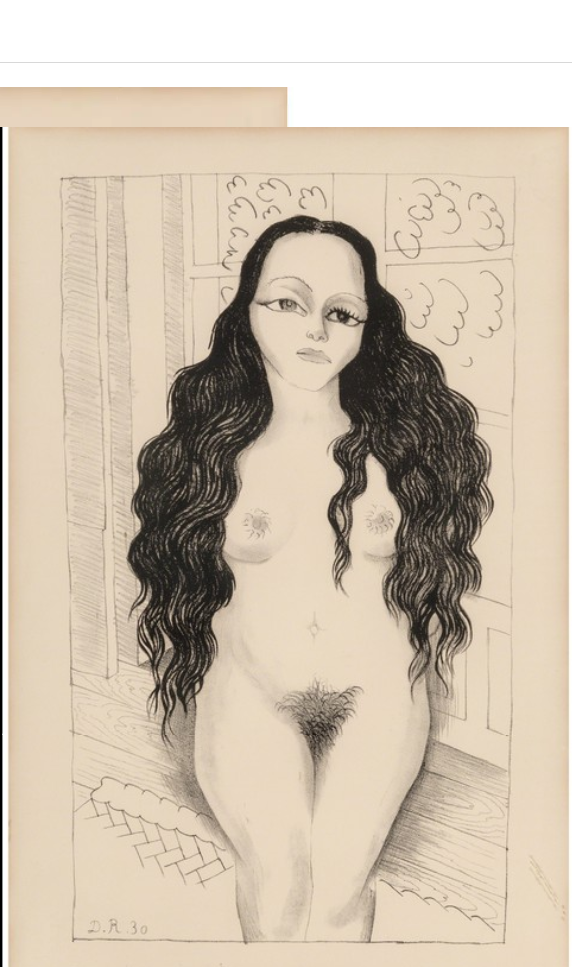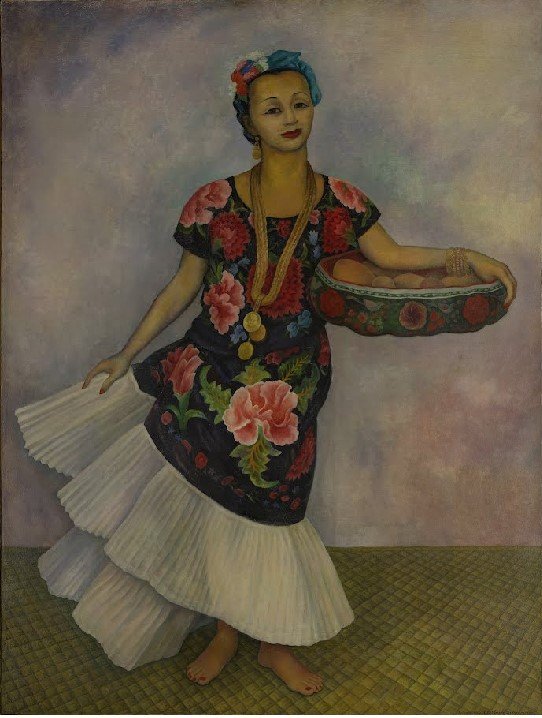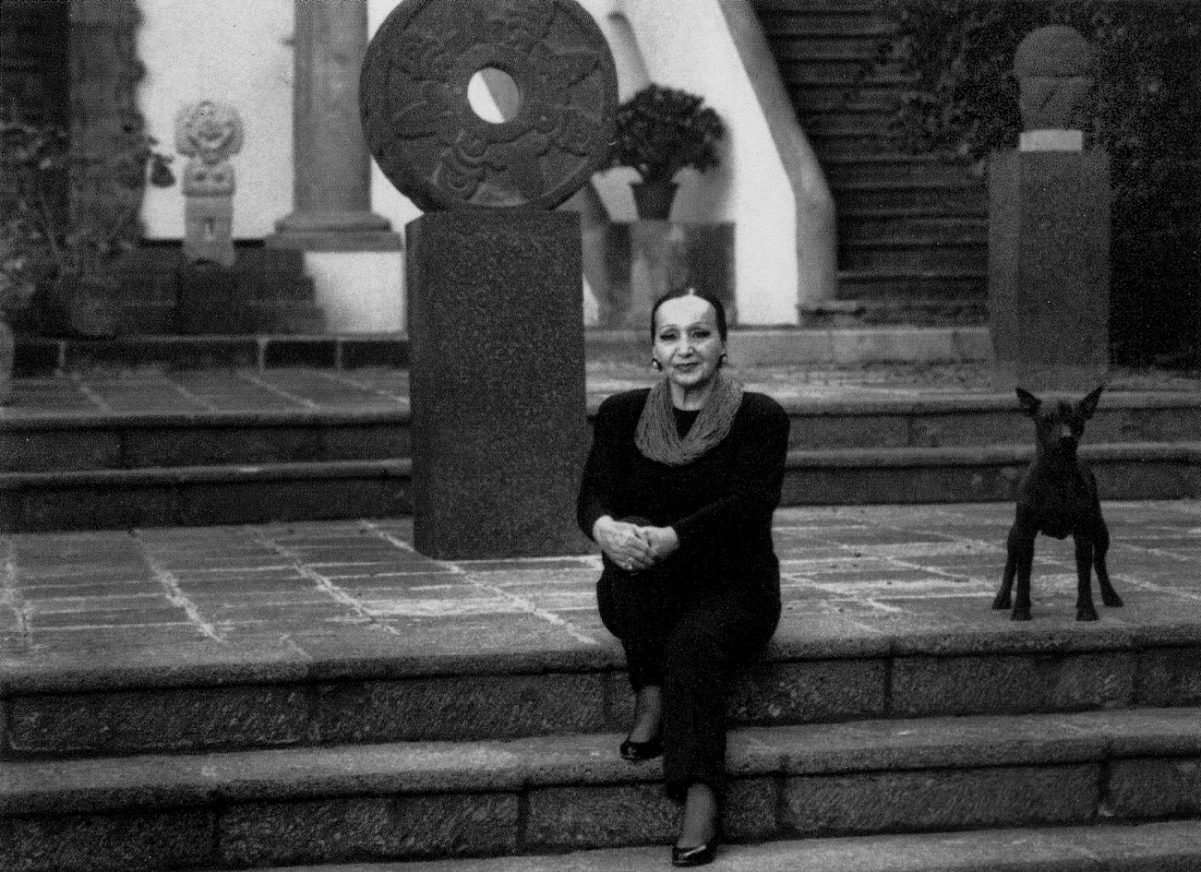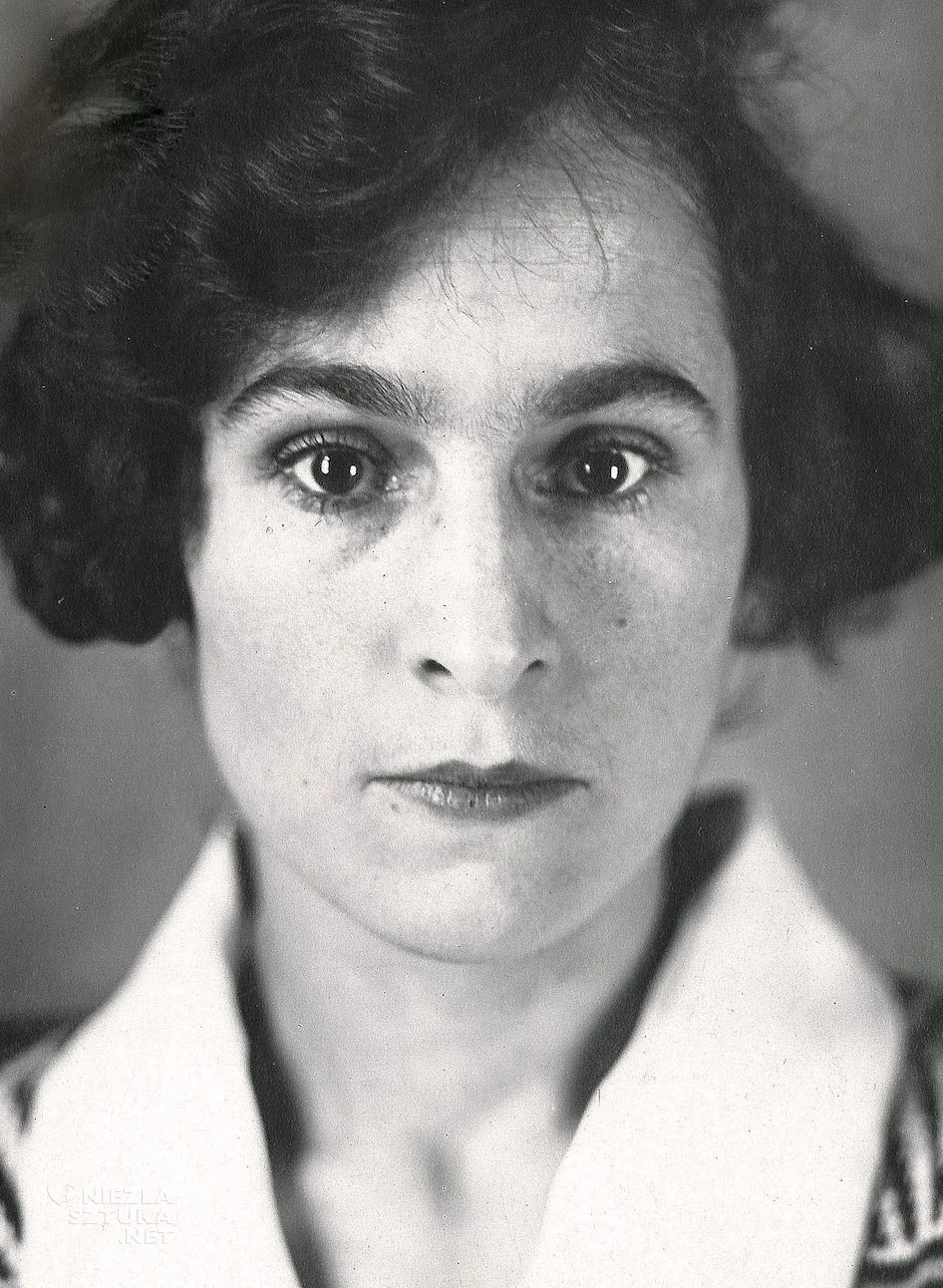Episode #92: Cherchez La Femme, or The Woman Behind the Art--Dolores Olmedo (Season 11, Episode 1)
There’s a phrase in the French language that goes, “Cherchez la femme.” In translation, it means “find the woman,” or “look for the woman,” and typically it’s derogatory, a phrase used as an explanation for the reasons why a man may be behaving badly. Cherchez la femme, some say, meaning that “woman troubles” are assumed to be at the core of any man’s real problems. But I like the idea of appropriating the phrase “cherchez la femme” to mean that we’re going to look for the women who made things right in art history, who bolstered and brought attention to some big-name artists. And Dolores Olmedo is a great person to get us started.
Welcome to season 11 of ArtCurious, where we’re highlighting the lives and work of the women who supported some of the world’s favorite artists. Today, meet Dolores Olmedo, a philanthropist and art collector who became one of the most influential supporters of Mexican Modernists Diego Rivera and Frida Kahlo.
Please SUBSCRIBE and REVIEW our show on Apple Podcasts and FOLLOW on Spotify
Don’t forget to show your support for our show by purchasing ArtCurious swag from TeePublic!
SPONSORS:
Kiwi Co: Get 30% off your first month plus FREE shipping on ANY crate line with promo code ARTCURIOUS
Bombas: get 20% off your first order with our link
Indeed: Listeners get a free $75 credit to upgrade your job post
Acorn.TV: Use promo code “artcurious”--all lowercase--to try Acorn free for 30 days
Betterhelp: Get 10% off your first month of counseling
Want to advertise/sponsor our show?
We have partnered with AdvertiseCast to handle our advertising/sponsorship requests. They’re great to work with and will help you advertise on our show. Please email sales@advertisecast.com or click the link below to get started.
https://www.advertisecast.com/ArtCuriousPodcast
Episode Credits:
Production and Editing by Kaboonki. Theme music by Alex Davis. Logo by Dave Rainey. Additional music by Storyblocks. Research help by Josefina de la Torre.
ArtCurious is sponsored by Anchorlight, an interdisciplinary creative space, founded with the intent of fostering artists, designers, and craftspeople at varying stages of their development. Home to artist studios, residency opportunities, and exhibition space Anchorlight encourages mentorship and the cross-pollination of skills among creatives in the Triangle.
Recommended Reading
Please note that ArtCurious is a participant in the Bookshop.org Affiliate Program, an affiliate advertising program designed to provide a means for sites to earn advertising fees by advertising and linking to bookshop.org. This is all done at no cost to you, and serves as a means to help our show and independent bookstores. Click on the list below and thank you for your purchases!
Episode Transcript
In 2009, The Times newspaper in the United Kingdom, in association with the Saatchi Gallery, put forth a massive request for input. Tell us, they said, tell us who you think are the greatest artists working since the year 1900. Everyone modern, everyone contemporary, alive, dead, it doesn’t matter—send in your names, and we’ll compile the list of the top 200 visual artists of the past century plus. And it’s funny to know how many people took this challenge to heart—almost 1.5 million Times readers sent in their recommendations, and sixteen weeks later, the Times published the results. Of course, the names you’d probably already expect to be on there were, indeed, on there: Picasso, Cézanne, Monet, and Duchamp, all in the top ten, for example. And then there were some adorably British, like the inclusion of L.S. Lowry at #125. (The British love Lowry.) There are some surprises, like Ansel Adams being all the way down at #153, and then, just two spots below him, sits Diego Rivera, one of the most important artists of Mexican Modernism. What’s not surprising, in two respects, is that Rivera’s wife, the iconic Frida Kahlo, is nowhere near him in that bottom quarter of the list. She’s up near the top, sitting pretty at #19. Not a surprise at all, really being that Kahlo is often cited as one of the most beloved artists of the 20th century. And what’s also not surprising is that she’s the only woman to round out the top twenty. (The next woman to make the list, by the way, is Diane Arbus, down at #39.) Now, I’m not going to go all feminist on you right now, though longtime listeners know that that is my frequent bent, but it is always fun to consider the relationship between Diego and Frida, and how it is one of the rare cases of the wife being more popular than her husband. So often, it’s the other way around. Typically, there’s an incredible and invested woman somewhere in the shadows, away from the spotlight, while a man—her partner, perhaps, or even father, friend, brother, son—gets the focus and the praise. And there’s a lot of that in art history. In fact, there’s an incredible woman who is right there in the shadows behind both Frida Kahlo and Diego Rivera, and if it wasn’t for her, it’s entirely possible that neither Rivera nor Kahlo would be so lauded today.
Some people think that visual art is dry, boring, lifeless. But the stories behind those paintings, sculptures, drawings, and photographs are weirder, more outrageous, or more fun than you can imagine. Welcome to Season 11, where we’re highlighting the lives and work of the women who supported some of the world’s favorite artists. Today, meet Dolores Olmedo, a philanthropist and art collector who became one of the most influential supporters of Mexican Modernists Diego Rivera and Frida Kahlo. This is the ArtCurious Podcast, exploring the unexpected, the slightly odd, and the strangely wonderful in Art History. I'm Jennifer Dasal.
There’s a phrase in the French language that goes, “Cherchez la femme.” In translation, it means “find the woman,” or “look for the woman,” and typically it’s a bit derogatory. Essentially, it’s used when a dude is acting weird, or having a rotten day, or really just behaving badly. Cherchez la femme, some say, meaning that “woman troubles” are assumed to be at the core of any man’s real problems. See? Kinda gross. But I like the idea of appropriating the phrase “Cherchez la femme” to mean that we’re going to look for the women who made things right in art history, who bolstered and brought attention to some big-name artists. And Dolores Olmedo is a great person to get us started.
María de los Dolores Olmedo y Patiño Suarez—typically called Dolores, or Lolo or Lola, her nicknames—was born in Mexico City on December 14, 1908, the eldest child of a businessman father and a schoolteacher mother, and it seems like Dolores picked up traits from both of her parents’ careers. Later in life, she, like her father before her, would become a hugely successful businessperson, and, like her mother, shared a passion for the arts, especially music and painting. After Olmedo’s father passed away when she was just four years old, her rearing—especially her education—went into her mother’s hands, and here her mama succeeded: Dolores received a high-quality education specializing in philosophy, law, music, and Mexican art history—but little did she know that she was about to have a major brush with Mexican art history itself.
In 1925, Dolores was met with a defining moment, and a defining person, in her life. While on visit to the Ministry of Public Education with her mother, Dolores, age 17, bumped into a large man, wearing a painter’s smock instead of the suit expected of a public servant at the ministry. This, of course, was Diego Rivera, who had been commissioned to complete a cycle of murals proudly celebrating all things Mexican: its industries, politics, foods, festivals, traditions, and—most importantly—its people. Rivera received this commission only a few years after the end of the Mexican Revolution and championing a clearly Mexican aesthetic was the way to go. Rivera worked on and off on these incredible murals for the better part of five years, and it grew to include hundreds of figures to present the breadth of Mexican appearance, fashion, and culture. So it makes sense that he would have had his eye out for models to help expand his visual representation. And that’s when Diego Rivera turned to Dolores’s mother and asked her permission—could he make some drawings of Dolores? Recalling the moment many years later, Dolores noted, quote, “He asked my mother if he could make some drawings of me. She agreed without knowing that I would pose nude. And besides, I never told her.” And Dolores did indeed pose nude for the artist—one famous representation of her was later created into a lithograph, and it reveals Dolores Olmedo as a gorgeous, big-eyed, curvy woman with long, wavy hair that cascades down to her hips. Rivera isn’t sensitive about his representation of her—and in fact goes out of his way to make her as appealing to the male gaze as possible. Her large breasts and prominent public hair are on full display, providing the print with an erotic charge, even if, in sections, it’s a bit wonky—for example, Dolores is presented here standing with her arms, most likely, clasped behind her back, only Rivera sketched it badly enough that she appears to have had her arms lopped off. Still—it’s stunning, and in this work, which is one of 27 drawings that the artist made of her and later gifted to her, makes it obvious that Dolores Olmedo made as much of an impression upon Diego Rivera as he made to her—and they would maintain a friendship that would build over the following decades.
Not that that made Diego and Dolores super-close for all those years. Indeed, it’s been argued by some that the two drifted apart after the completion of his murals for the Education of Ministry, simply because both of them were busy. If you’ve listened to our two-part episode on Diego Rivera and Frida Kahlo, back from the first season of the podcast, then you’ll know the basics of Diego’s biography, but suffice to say that the late 1920s and early 1930s were some of the busiest years of his artistic career. But Dolores Olmedo was no slouch, either. At the Universidad Autónoma de México, Olmedo took up a career as a law student at a point in history where Mexican women rarely attained a college degree, let alone advanced studies in law. At the same time, her passionate dual interests in both the arts and in Mexican culture pulled her away, and she eventually went on to study at both the National School of Music and the Academy of Saint Carlos, one of the most lauded art institutions in Mexico City—and, fun fact, the first art museum in the Americas. In addition, she traveled to Paris, where she further studied anthropology and art history—all evidence of a voracious appetite for learning. Art, music, law, life—she wanted it all. And she wanted to do it all.
And all of that is coming up next—right after these quick messages. Remember that by supporting our advertisers, you keep us going! Thanks for listening.
Welcome back to ArtCurious.
For all her ambitions early in life, Dolores Olmedo made sure that her family would always be a priority, and she took her job as a committed daughter and devoted sibling very, very seriously. After her mother’s death, she swore to support her family via any means necessary, and, as the newly-minted Olmedo matriarch, she did so by noting a need that she could fulfill—a provider of brickwork who collaborated with different local construction companies. Essentially, Dolores Olmedo was a small business owner- of an industrial firm, no less—we think nothing of women owning their own businesses today in any field, but almost a hundred years ago, this was not the norm—Olmedo was, in many ways, a revolutionary, and her commitment to her field brought her success as one of Mexico City’s most prominent businesswomen.
In 1935, Olmedo married Howard S. Phillips, a British journalist who had lived in Mexico since the Revolution, when he worked as a war correspondent. Their union produced four children but did not last—and by the late 1940s, the couple had separated. There’s a story that has long raised eyebrows about Olmedo and Phillips that may or may not be true and may or may not have any bearing on their relationship and eventual divorce. According to an article in a 1998 issue of Architectural Digest covering the relatively new Museo Dolores Olmedo—more on that in a bit—author Jonathan Kandell notes that Howard Phillips discovered the 27 drawings of his wife, drawn by Diego Rivera. Remember that the young Olmedo posed nude, and this was apparently something that Phillips could not handle. He flew into a rage and ordered that Olmedo get rid of the drawings—which, to her dismay, she did. Here was this priceless bit of her history, being forced away. Luckily, though, she would have the opportunity to get them back—and garner much more in the process, too.
1955 was yet another banner year for Dolores Olmedo, a year that was marked by her renewed friendship with Diego Rivera, whom she had met thirty years prior at the Ministry of Education in Mexico City. By the mid-1950s, Olmedo had divorced her first husband, and Rivera was mourning the loss of Frida Kahlo, who had died in 1954. According to Raquel Tibol, a Mexican art critic who knew Kahlo and Rivera, it was actually Diego Rivera’s daughter who brought the two friends back together. As Tibol reported to the New York Times in 1993, quote, “Miss Olmedo faded from Rivera’s life until after Kahlo’s death…She returned after Rivera’s younger daughter, Ruth Rivera Marin, suggested that her father paint another portrait of Miss Olmedo, who had become a wealthy woman with many friends among the political elite. After the portrait, Olmedo became Rivera’s patron and closet companion…displacing his last wife, Emma Hurtado.” Unquote. Indeed, the pair became so close that Rivera spent the final two years of his life at Olmedo’s Acapulco home, recovering from several medical treatments aimed at bolstering his poor health. While at the Olmedo compound, Rivera occupied himself by painting portraits of Olmedo’s children, her surroundings, and Dolores herself—especially his famed Portrait of Dolores Olmedo, from 1955, which showcases Dolores dressed colorfully as a tehuana, a woman from the Isthmus of Tehuantepec where locals don some of the most sought-after, richly-designed Mexican garments. To Rivera, tehuana women were the ideal—the most authentic and beautiful of Mexican women, so it’s no surprise that he portrays Olmedo as such—and that she, like Frida Kahlo, enjoyed expressing their cultural pride through their clothes.
Their clothing preferences, and their mutual care for the same man, may have been one of the few things that Dolores Olmedo and Frida Kahlo had in common. And the relationship—or lack thereof—between the two women might go a long way to explain why Olmedo and Rivera spent the better part of thirty years as minor, not major, figures in one another’s lives. During her lifetime, Olmedo made no qualms about talking about Frida Kahlo, and she was… not a fan, let’s just say. “I was never a friend of Frida Kahlo,” she once declared in the early 1990s. She also liked to throw shade upon Frida’s intimate life, famously dismissing Frida’s bisexuality as some kind of character flaw by saying, quote, “Frida Kahlo liked women. I liked men.” Unquote. Kahlo’s paintings were met with equal derision by Olmedo, who has called Frida’s works “trashy” and “ugly” over the years, all while becoming one of the world's foremost private collectors of Frida’s paintings. Not that it was her idea. “I acquired the Frida collection to give pleasure to Diego…,” she said, “Otherwise, I would not have done it.” Unquote.
That statement is an important one to note, because she’s referring to one of the main reasons we remember Dolores Olmedo today: after their deaths, she became one of the biggest collectors—and supporters—of the lives, works, and memories of Diego Rivera and of Frida Kahlo. Much of this came as a consequence of that renewed relationship that Diego and Dolores experienced in the mid-1950s, and the pair conceived of grand plans to build a museum dedicated to showcasing Rivera’s works, and Dolores already had big ideas for the works that she wanted to purchase just for this reason. It thus made sense, in Rivera’s mind, to name her the president of his estate, but he asked that she take on the role of president for Kahlo’s estate as well, a proviso that wasn’t her first choice, to put it lightly, as her previous comment made clear. But she did it for her friend, of whom, she noted, she was, quote, “passionately protective and fiercely loyal,” unquote.
Now, let’s quickly address the elephant in the room. Were Dolores Olmedo and Diego Rivera romantically involved? It’s actually not completely clear. Olmedo denied the rumors throughout her lifetime that she was Rivera’s lover—and Rivera was a total ladies’ man and was truly not monogamous throughout most of his life—but then historians have often tried to make hay out of those 27 drawings that Rivera made of her, especially the images presenting her in the nude. To be fair, when Rivera finally gifted back those drawings to Olmedo—who, remember, was harangued by her husband into returning them—he inscribed one large nude with the following caption: quote— “For Lola Olmedo, admiration and love during 25 years and now you will believe it and I am sure you know that this has become a great love—Diego Rivera, August 16, 1955.” Unquote. Certainly, any romantic entanglements that the pair may have had might shed light on Olmedo’s explicit distaste for Frida Kahlo—it could have been jealousy, pure and simple. And even if there wasn’t a sexual or romantic relationship there, Olmedo might still have believed herself to be Rivera’s greatest muse.
How did Olmedo, Diego Rivera’s self-proclaimed “greatest muse,” ensure his legacy and that of his wife, Frida? That’s coming up next—right after this break. Come right back.
Welcome back to ArtCurious.
Dolores Olmedo did hold true to her word to establish a museum dedicated to Diego Rivera, Frida Kahlo, and Mexican art and culture, though it would take decades to come to fruition. Using profits from her successful construction company, she began to invest in real estate, and in 1962, she purchased a sprawling 16th century compound on the southern edge of Mexico City. A former monastery, the estate featured verdant gardens and land occupied by several peacocks and other native birds, as well as multiple Xoloitzcuintle —a breed of Mexican hairless dog. Olmedo lived on the estate for decades as she continued to build her private art collection, which not only consisted of works by Rivera and Kahlo that Rivera sold or bequeathed to Olmedo before his 1957 death, but also included folk arts and crafts made from traditional materials like papier-maché, copper, tin, and ceramics; pre-Hispanic archaeological pieces; gilded wooden figures from Mexico’s colonial period; and works by both modern and contemporary artists who both worked and were inspired by Rivera and Kahlo. During that same period, Olmedo worked alongside Rivera’s daughter Guadalupe Rivera Marin, to secure “historical monument” status to Rivera’s murals in Mexico City, a designation that was indeed granted, as well as to the works of Rivera’s pals Jose Clemente Orozco and David Alfaro Siqueiros.
By the late 1980s, Olmedo was finally prepared to make the Dolores Olmedo Museum a reality. But the project took longer than expected because the entire hacienda needed to be gutted, rewired electrically, and fitted with state-of-the-art climate control systems to protect the valuable and fragile works of art therein. And it wasn’t easy. As the lead architect, Luís Hernández, would later comment, quote, “More than half the building was slowly sinking because its foundation was on land that used to be a lake and canals…In some rooms the roof was leaking and had to be largely redone.” Unquote. Meanwhile Olmedo herself had to move to an alternate abode while her home—including her private quarters—were being retooled, and at one point she squatted in makeshift barracks nearby the hacienda, declaring, quote, “I felt like an earthquake refugee,” unquote. Still, don’t feel terrible for Dolores—she was a very wealthy and well-connected woman at this point, and when her museum did eventually open its doors to the public in 1994, it—and she—was met with great fanfare and press. In many ways, the Museo Dolores Olmedo, as the name so keenly suggests, was a monument as much to the philanthropist and collector as it was to Rivera, Kahlo, and the artists and artworks she collected: photographs and personal effects from Dolores’s life was scattered about, including personal letters and autographs from celebrities and politicians. Indeed, Olmedo was incredibly involved in the selection and display of artworks and curios in the museum, even suggesting exhibitions that revolved around her and her artistic, political, and financial influence.
You can imagine that this self-focus and single-mindedness might have been met with some criticism, and you’d be right. Until Olmedo’s death in 2002 at age 94, she repeatedly fended off the objections of art historians who noted her overt preference for Diego Rivera’s works over Frida Kahlo’s, leading to perceived withholding of Kahlo works from display. Some have even declared Olmedo’s actions a kind of sabotage against Frida’s rising stardom, which began to skyrocket in the early 1980s with the publication of Hayden Herrera’s landmark biography of Kahlo, which was released only a few years prior to construction on the Museo Dolores Olmedo. By keeping Kahlo’s works out of the public eye, Olmedo declared, she was assisting to keep the works intact and safe from travel and over-exhibition, and thereby also increasing their market value, a concern that Rivera shared for his wife’s work during his final years. And indeed, until her final days, Olmedo asserted that it was through her efforts—due to her promise to Rivera—that Kahlo had even reached celebrity status, with Olmedo saying, quote, “If it were not for my private collection, Frida Kahlo would not be known to the world.” Unquote.
This sense of competition—whether true, rumor, self-prophesizing, or some combination thereof, did indeed appear to have some effect on the legacy of Frida Kahlo during Olmedo’s final decade. As an example, for a long period the construction of the Museo Dolores Olmedo, Frida Kahlo’s iconic home, La Casa Azul, was shuttered—conveniently as pilgrimages to the Casa Azul were just beginning to soar. Olmedo, as the president of the Rivera and Kahlo trusts, could have made the renovation of the casa—now christened the Museo Frida Kahlo—simultaneously but chose not to—a decision that infuriated many Mexicans. In one New York Times exposé, locals commented on that perceived competition and jealousy that seems, even today, to swirl around that triangle of Olmedo, Rivera, and Kahlo. One woman, rather straight to the point, quipped, quote, “Dolores Olmedo kept the museum closed for two years because she wanted to, because she has a passionate hatred for Frida...I don’t think she has ever pardoned Frida for being the true woman of Diego’s life,” unquote. Even Rivera’s daughter, Guadalupe Rivera Marin, noted her frustration with Olmedo’s control over the legacies of the artists, noting, quote, “Everyone in this country is very afraid of her…She has been very friendly with all of the Presidents, and all of them let her do as she wishes,” unquote.
For her part, Dolores Olmedo appeared unflappable, even up to the end of her long life, often calling her critics “envious meddlers” who chose to view her works negatively rather than considering the positive effects of her commitment to Mexican culture, especially via the legacies of Frida Kahlo and Diego Rivera. And it is entirely possible that much of the explosion of interest in both Kahlo and Rivera may not have been quite so huge without Olmedo’s foresight and dedication. Because of her friendship with Rivera, she funded the largest private collection of Frida Kahlo artworks in the world, bought for the equivalent of only $1,600, at the behest of Kahlo’s widower. And there’s something special about needing to make the journey to Mexico City to see so much of both Kahlo and Rivera’s works within the city and country that they made them—that they so loved, that so inspired much of what they created. In today’s competitive world of art collecting, where works are scattered to all four metaphorical corners of the globe, that’s not a small feat, and for better or worse, it does allow for some extra context for experiencing and understand these icons of Mexican Modernism. And just because Dolores Olmedo is no longer living doesn’t mean that she has stopped exerting influence over the artists she loved (and loathed). In her final years, she dedicated significant funds in her will to continue the funding of the Museo Dolores Olmedo, and since its opening in 1994, it has grown to include a five-building complex filled with over 6,000 works of art, welcoming millions of visitors. I, for one, am grateful for the opportunity to experience her one-of-a-kind collection, and that her memory has helped us, as art lovers, to enjoy so much of her country’s artistic and cultural riches. And as for how she herself wanted to be remembered, she once replied that she wanted to be remembered, quote, ““Just as I am—a women who did whatever she felt like doing, and luckily succeeded at it.”
Thank you for listening to the ArtCurious Podcast. This episode was written, produced, and narrated by me, Jennifer Dasal. HUGE thanks to Josefina de la Torre (CONFIRMED) for her awesome research and writing help with this episode. Our theme music is by Alex Davis at alexdavismusic.com, and our logo is by Dave Rainey at daveraineydesign.com. Our podcast services are provided by our friends at Kaboonki. Subscribe now to their show, Subgenre, a podcast about the movies. Season 1 is available in its entirety now—please visit subgenrepodcast.com for more details. The ArtCurious Podcast is sponsored primarily by Anchorlight. Anchorlight is a creative space, founded with the intent of fostering artists, designers, and craftspeople at varying stages of their development. Home to artist studios, residency opportunities, and exhibition space Anchorlight encourages mentorship and the cross-pollination of skills among creatives in the Triangle. Please visit anchorlightraleigh.com.
The ArtCurious Podcast is also fiscally sponsored by VAE Raleigh, a 501c3 nonprofit creativity incubator, which means you can donate tax-free to “ArtCurious” to show your support. To find the donation links and for more details about our show, please visit our website: artcuriouspodcast.com. We’re also on Twitter and Instagram at artcuriouspod. And we have podcast merchandise! Check out the link to our TeePublic store in the show notes on this episode, or on our website.
Check back with us soon as we explore the facts, and the fictions, of the unexpected, slightly odd, and strangely wonderful in art history.


